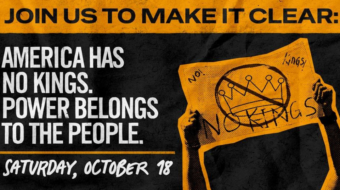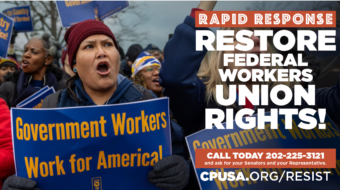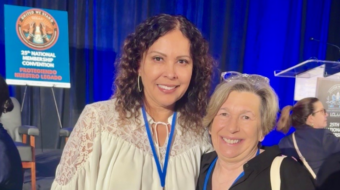
On May 16, 1918, Congress passed the Sedition Act, leading to the arrest, imprisonment, execution and deportation of dozens of unionists, anarchists and communists. The Sedition Act did not exist as a separate law under the U.S. code-it consisted entirely of revisions to the Espionage Act of 1917.
World War I
The U.S. was a formal participant in World War I from April 6, 1917 until the war’s end on November 11, 1918. Before entering the war, the U.S. had remained neutral, though an important supplier to Britain and other Allied powers. During the war, the U.S. mobilized over 4,000,000 military personnel. WWI cost over 110,000 U.S. deaths, including 43,000 due to the influenza pandemic. The war saw a significant increase in the size of the US military.
From unpatriotic speech to all criticism of the U.S. Government
To punish unpatriotic speech during wartime, Rep. Percy Quin (D-Miss.), a co-sponsor of the bill, summarized its intent: “I want to curb these fellows,” he said, “who are disloyal in their hearts.” The Espionage Act of 1917 passed the previous year, had already criminalized speech that could have the effect of limiting military recruitment-but the Sedition Act broadened these penalties to include all criticism of the U.S. government.
The intended targets included the leaders of the Industrial Workers of the World (IWW), referred to as “pernicious vermin” by Sedition Act co-sponsor Sen. Kenneth McKellar (D-Tenn.). The language of the amendment was based on Montana’s notorious anti-sedition law, under which 79 people were convicted.
Eugene Debs
Militant union leader Eugene Debs (1855-1926) was sentenced to 10 years in prison for opposing U.S. Entry into World War I.
One year after the Espionage and Sedition Act was voted into law, Debs was in Canton, Ohio for a Socialist Party convention. He was arrested for making a speech considered “anti-war” by the Canton district attorney.
Immigrant workers face the Palmer Raids
In the aftermath of World War I and the 1917 Russian Revolution, coupled with a sharp downturn in the capitalist economy worldwide, the U.S. ruling class trembled. Radical ideas of socialism captured working people’s imagination as they faced unemployment, hunger and poverty under capitalism. If U.S.-born and foreign-born working people were to unite, that could spell trouble for Wall Street and their political titans of the time. Fomenting “Red Scare” and xenophobia would work to their advantage. The same tactics were used against strikers and workers – both U.S. and foreign born – during the 1919 steel strike, for example.
In 1919 the infamous Palmer Raids began. Several thousand anarchists, communists and socialists were jailed as a result. Immigrant workers of many nationalities were targeted. At the start of the raids Russian workers were singled out. Many were deported. Early on J. Edgar Hoover (assistant to Palmer) also focused on the Communist Party and devised a scheme for arresting workers without giving notice of the right to an attorney. All told some 10,000 were arrested.
COINTELPRO and the attack on Black activists
Besides anti-communism, Hoover’s great fear was that a “Black messiah” would lead the African American people of the United States into empowerment. Motivated by that fear, Hoover and his FBI agents, working through COINTELPRO (Counterintelligence Program) and in cooperation with state and local police forces as well as private vigilante groups, targeted virtually all branches and leaders of the Black movement for equality and liberation.
The recent new attack on Assata Shakur, and on Cuba through her, has caused indignation. The White House, and the Justice and State Departments should be pressured to stop these dangerous games, drop the bounty for Assata, take Cuba off the State Sponsors of Terrorism list, and work toward normalization of U.S.-Cuba relations.
Today’s attacks on the Bill of Rights
Among other organizations, the Center for Constitution Rights singles out these current issues: Illegal Detentions and Guantanamo, Surveillance and Attacks on Dissent, Criminal Justice and Mass Incarceration, Corporate Human Rights Abuse, Government Abuse of Power, Racial, Gender and Economic Justice, International Law and Accountability.
Photo: Numerous signs dotted Manhattan’s walls, bus stops and subway entrances in the immediate aftermath of 9/11. (Israel Smith/PW)










